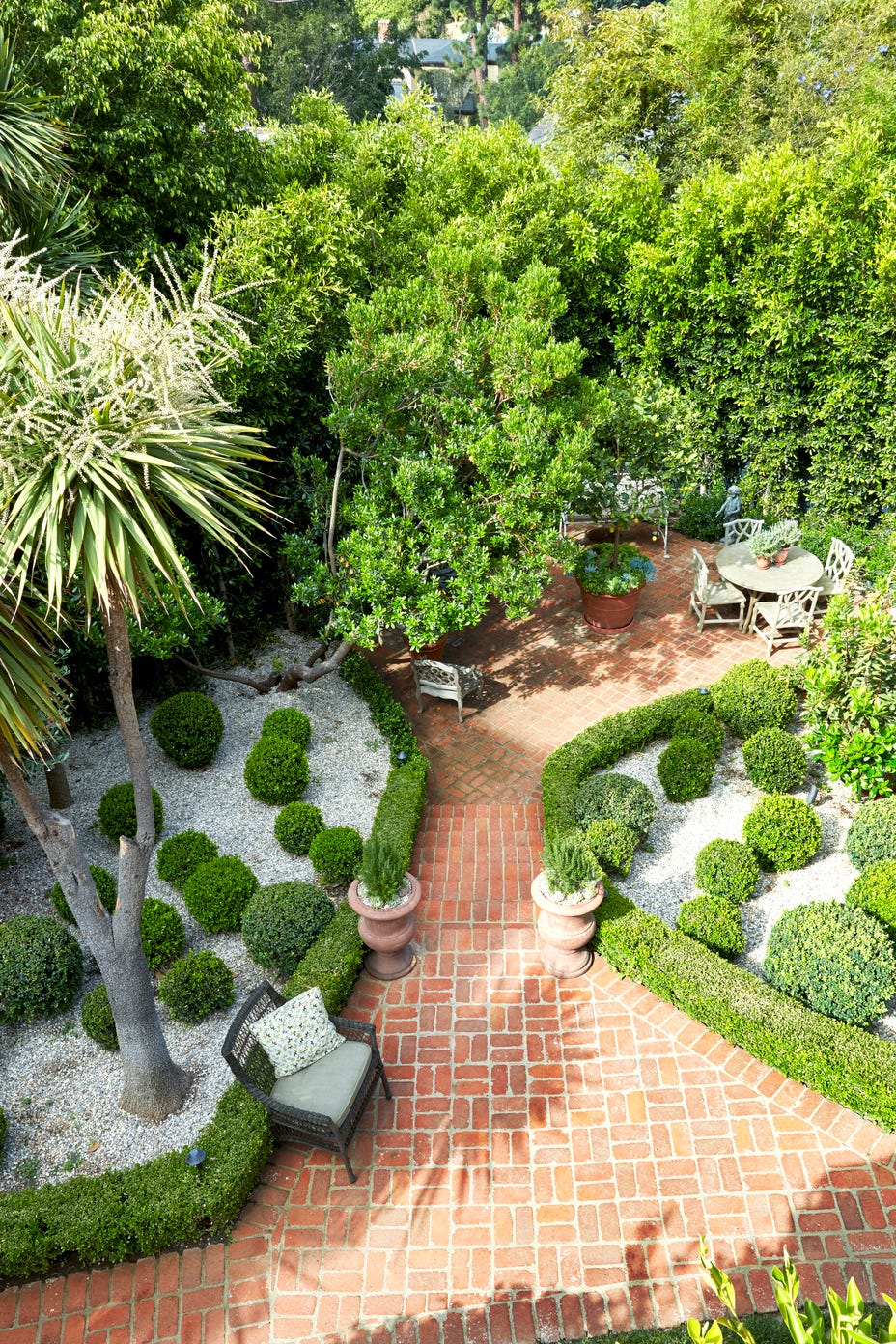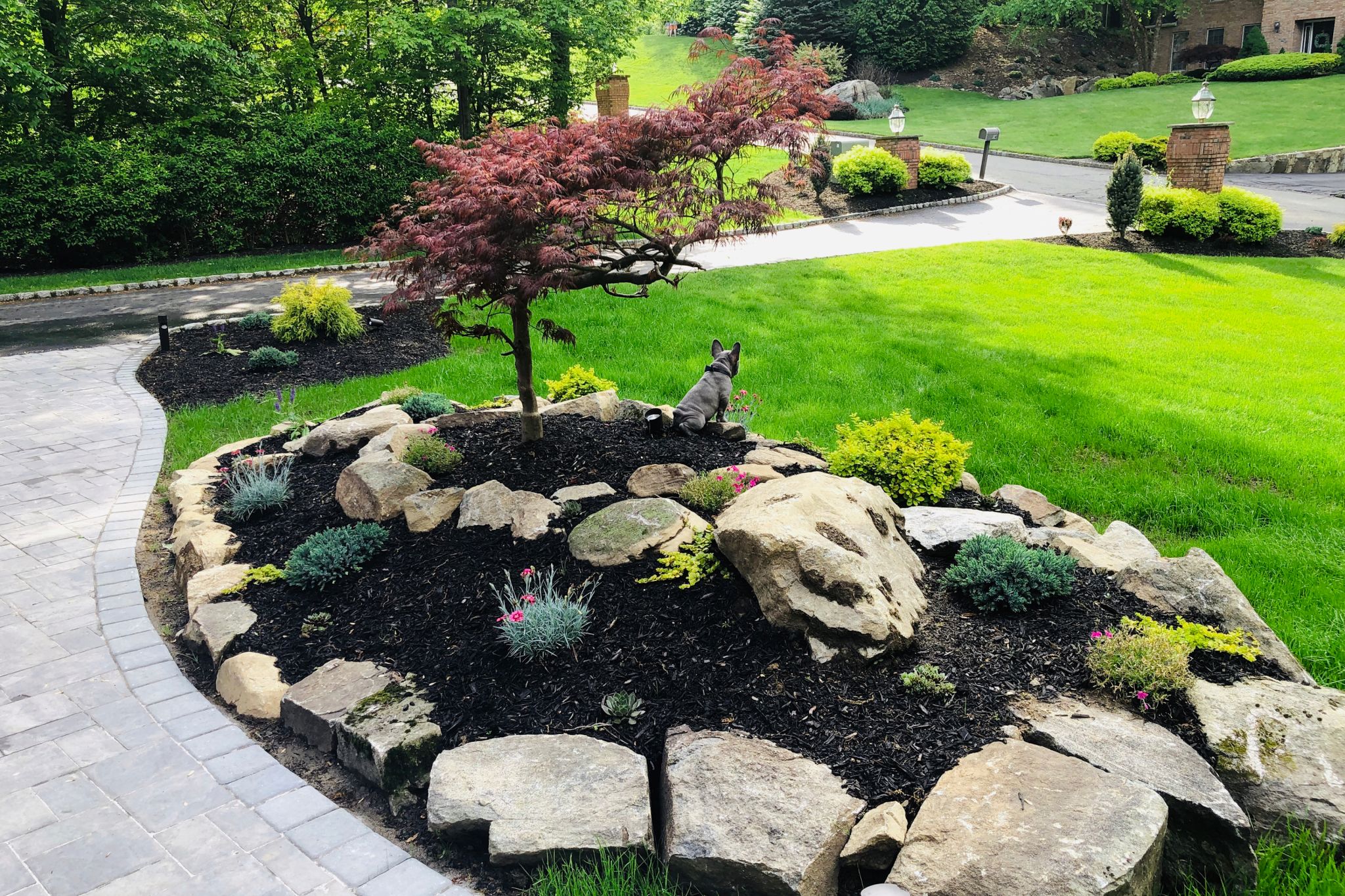Discovering Different Types of Landscape Design to Enhance Your Outdoor Setting
Landscaping plays an important duty in defining exterior rooms. Different designs, from traditional yards to modern minimal layouts, provide distinctive benefits for improving appearances and feature. Including elements like xeriscaping and native plants can contribute to ecological equilibrium. Comprehending the interaction of hardscape and softscape is necessary for creating inviting settings. The options available can be frustrating, motivating one to review which design best straightens with their vision for an exterior refuge.
Standard Yard Landscaping

While lots of modern gardens embrace minimalism and native growings, standard yard landscaping continues to be a treasured technique that stresses balance, framework, and ornamental attributes. This style commonly incorporates formal geometric layouts, where flowerbeds, pathways, and hedges are organized with precision. Central prime focus, such as water fountains or sculptures, draw the eye and offer a feeling of harmony.Traditional landscaping frequently includes a variety of plant types, showcasing seasonal blossoms and evergreen elements. Traditional shrubs, perennials, and annuals produce vibrant shades and textures throughout the year. Additionally, trellises, pergolas, and arcs include upright passion and function as assistance for climbing up plants, improving the overall aesthetic.The use natural materials, such as rock and wood, more enriches the conventional landscape, adding to a classic top quality. Inevitably, this style invites relaxation and satisfaction, making it a cherished selection for those looking for a picturesque exterior atmosphere.
Modern Minimalist Landscaping
Modern minimal landscaping emphasizes simplicity and capability, characterized by clean lines and open spaces. Key attributes consist of a minimal plant combination and thoughtful hardscape layout that prioritizes functionality and aesthetic appeal. Reliable plant choice methods additionally improve the minimal method, developing serene exterior settings that motivate leisure and reflection.
Trick Characteristics of Minimalism
A growing fad in landscaping is the accept of minimalism, defined by simpleness and capability. Minimalist landscaping concentrates on tidy lines, open areas, and a restricted shade palette, promoting a sense of tranquility. Components are meticulously curated to prevent mess, allowing each part to stand out. The use of all-natural products, such as stone and wood, improves the organic feeling while maintaining a visual balance. In addition, minimal styles frequently incorporate geometric forms, which can create visual interest without overwhelming the detects. Water functions may be included, functioning as centerpieces that boost calmness. On the whole, minimalism in landscape design stresses the beauty of restraint, permitting nature's fundamental top qualities to radiate through in a harmonious outdoor setting.
Plant Selection Methods
Efficient plant selection is vital for accomplishing the wanted aesthetic in modern minimal landscaping. The emphasis should be on simplicity, making use of a limited combination of plants that match each various other and the surrounding setting. Indigenous plants are usually suitable, as they need less upkeep and water, promoting sustainability. Choosing types with differing structures and elevations can include aesthetic rate of interest without frustrating the space. Organizing plants in collections instead than scattering them improves cohesion and strengthens the minimalist theme. Evergreen ranges can offer year-round structure, while seasonal blossoms introduce refined shade adjustments. Eventually, the objective is to produce a calm exterior room that symbolizes tranquility and consistency via thoughtful plant choices.
Hardscape Style Principles
Essential aspects in hardscape layout considerably add to the overall visual appeals and capability of minimalist landscape design. This layout technique highlights clean lines and downplayed materials, creating a clean visual experience. Secret components consist of pathways, patios, and keeping wall surfaces, which not just define rooms yet likewise boost ease of access and use. Making use of materials such as concrete, rock, and wood is prevalent, reflecting a natural yet contemporary visual. Integrating symmetrical layouts and geometric forms further reinforces the minimal philosophy, permitting an unified blend with bordering greenery. Furthermore, correct water drainage and erosion control are necessary considerations, making certain longevity and sustainability. Eventually, effective hardscape design acts as a foundation that complements softscape components while maintaining balance and simplicity in exterior environments.
Cottage-Style Landscaping
Cottage-style landscape design uses a delightful strategy to producing inviting outside rooms. By integrating lovely plant combinations, this style fosters a sense of warmth and fancifulness. The emphasis on cozy, well-defined locations motivates leisure and pleasure of nature.
Lovely Plant Mixes
Although lots of property owners seek to develop an attractive outside room, attaining the charm of cottage-style landscape design frequently pivots on thoughtful plant mixes. Vivid flowers, lush vegetation, and aromatic natural herbs can be artfully matched to stimulate a feeling of whimsy and fond memories. Incorporating lavender, sissies, and foxgloves creates a colorful tapestry that draws in pollinators while offering a wonderful scent. Incorporating decorative grasses like miscanthus can include structure and activity, enhancing the softer flowers. Additionally, blending yearly and perennial plants guarantees continual color throughout the seasons. The use of mountain climbers, such as clematis Related Site or honeysuckle, can boost vertical rate of interest. Generally, these mixes not only enhance the landscape however additionally cultivate a captivating and welcoming ambience.

Comfortable Outside Spaces
Creating comfy exterior spaces calls for a careful blend of convenience and charm, enhancing the lively plant combinations found in cottage-style landscaping - Retaining Wall Installation. These locations usually feature inviting seating plans, such as weathered wood benches or supported chairs surrounded by lush plant. Soft lights, like fairy lights or lights, adds warmth, transforming the space into a tranquil resort. Incorporating aspects such as trellises decorated with climbing roses or aromatic herbs boosts sensory experiences. Furthermore, paths made from rustic stones welcome expedition and connection with nature. Decorative touches like birdbaths or whimsical garden art add to a feeling of whimsy. Eventually, the objective is to produce a charming atmosphere that motivates relaxation and satisfaction of the elegance bordering these comfortable exterior havens
Xeriscaping for Water Preservation
Just how can neighborhoods balance visual landscaping with the pushing need for water preservation? Xeriscaping arises as a sensible option, advertising sustainable practices that reduce water use while improving exterior appeal. This landscape design technique concentrates on making use of drought-resistant plants belonging to the region, which require substantially much less water than standard gardens. By including compost and reliable irrigation systems, xeriscaping decreases evaporation and drainage, more conserving precious water resources.Communities can develop visually appealing landscapes via cautious planning, picking a varied array of appearances and shades that flourish in dry conditions. Furthermore, xeriscaping encourages making use of ornamental rocks browse around this web-site and ornamental crushed rock, providing practical and attractive choices to grass yards. As areas accept this eco-friendly method, they not only reduce their water consumption yet likewise advertise biodiversity and resilience in their neighborhood environments. Eventually, xeriscaping functions as a demo of the harmony between visual allure and ecological responsibility.
Hardscape Layout Elements
Hardscape layout aspects play an essential duty in boosting exterior areas by giving structure and performance. These non-plant attributes, such as patios, walkways, wall surfaces, and decks, create visual rate of interest while offering sensible purposes. Utilizing materials like concrete, brick, and stone, hardscaping adds to the overall aesthetic appeal and longevity of a landscape.Incorporating hardscape components can define areas within a lawn, directing movement and encouraging social communication. As an example, a well-placed path can connect different sections of the garden, while preserving walls can manage altitude adjustments and protect against erosion.Furthermore, hardscape layout can boost access and safety, giving steady surface areas for lounging or strolling. Reliable integration of hardscape elements enhances soft landscaping, ensuring a well balanced outside environment. Inevitably, thoughtful hardscape layout improves not just the elegance of exterior rooms however additionally their usability, making them more inviting and useful for visitors and homeowners alike.
Outside Living Areas
While exterior living rooms supply a seamless blend of convenience and nature, they function as vital expansions of a home, enhancing way of life and recreation. These areas can include outdoor patios, decks, or outdoor kitchen browse around this site areas, created to cultivate relaxation and entertainment. Grill Islands. By integrating practical furnishings and stylish decor, homeowners produce welcoming environments for events or peaceful evenings.The combination of shade frameworks, such as pergolas or awnings, secures against the components while preserving an open feeling. Fire pits and outside heating units expand use into cooler months, providing heat and setting. In addition, integrating lights attributes boosts the space's functionality after sundown, developing a wonderful night atmosphere.Landscaping aspects, such as paths and borders, better specify these areas, guiding movement and including visual allure. Inevitably, outside living areas change backyards right into functional hideaways, promoting a way of life that accepts both nature and convenience
Native Plant Landscaping
Indigenous plant landscape design emphasizes using aboriginal vegetation to develop sustainable and unified outside environments. This strategy not just boosts biodiversity yet likewise preserves water and lowers the need for chemical plant foods and pesticides. By choosing plants that are belonging to a certain region, home owners can ensure that their landscapes are well-adapted to local soil and climate conditions, causing reduced maintenance requirements.Additionally, native plants supply essential habitats for neighborhood wild animals, including birds, butterflies, and bees, promoting ecological health and wellness. Landscape makes that integrate these plants frequently include naturalistic formats that simulate regional ecosystems, promoting a sense of area and connection to the environment.Furthermore, native plant landscaping can add to soil stability and erosion control, making it an eco responsible selection. Generally, this technique not just enhances outside spaces however also sustains the local ecosystem, developing a sustainable equilibrium in between human task and nature.

Frequently Asked Inquiries
Exactly How Can I Choose the Right Landscape Design Style for My Home?
Picking the right landscape design style for a home includes evaluating the property's architecture, environment, and individual preferences. Bbq Island Installation. Researching various designs and consulting specialists can supply assistance to develop an unified exterior room tailored to private requirements
What Is the Ordinary Cost of Expert Landscape Design Solutions?
The ordinary cost of expert landscaping solutions generally ranges from $1,000 to $5,000, relying on project dimension, location, and complexity. Property owners need to take into consideration getting numerous quotes to assure they get fair prices and quality solution.
Just how Frequently Should I Preserve My Landscaped Backyard?
The regularity of keeping a landscaped lawn generally depends upon the plants and functions present. Usually, routine maintenance every few weeks is encouraged, with seasonal tasks boosting in frequency during optimal growing seasons for ideal health and wellness and aesthetic appeals.
Exist Landscaping Options for Small Urban Spaces?

Numerous landscape design choices exist for tiny metropolitan spaces, including vertical yards, container plants, and roof gardens. Incorporating these components can make the most of minimal locations while providing greenery, improving visual appeals, and boosting air quality in urban atmospheres.
What Plant kingdom Are Finest for Bring In Neighborhood Wildlife?
The finest plants for bring in neighborhood wild animals consist of native flowering types, berry-producing bushes, and varied turfs. These plants provide essential food and environment, fostering a thriving environment that sustains numerous birds, pests, and small mammals. Lots of house owners look for to produce a picturesque exterior space, attaining the charm of cottage-style landscaping usually pivots on thoughtful plant mixes. Creating comfortable exterior areas requires a cautious mix of comfort and charm, complementing the vibrant plant combinations discovered in cottage-style landscaping. Indigenous plant landscape design highlights the use of native vegetation to develop unified and sustainable outdoor atmospheres. Landscape creates that incorporate these plants frequently feature naturalistic layouts that resemble local ecosystems, fostering a feeling of place and connection to the environment.Furthermore, native plant landscaping can contribute to dirt stability and disintegration control, making it an environmentally responsible choice. Different landscaping alternatives exist for tiny urban spaces, including upright yards, container plants, and rooftop yards.